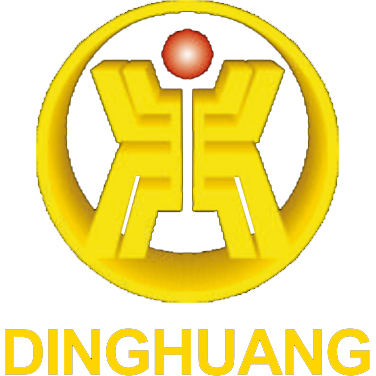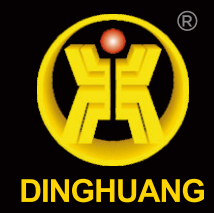What is an angle grinder
Electric angle grinder is a machine that uses high-speed rotating thin grinding wheels, rubber grinding wheels, steel wire wheels, etc. to grind, cut, remove rust, and polish metal components. Angle grinders are suitable for cutting, grinding, and brushing metal and stone materials, and water should not be used during operation.
Electric angle grinder is a machine that uses high-speed rotating thin grinding wheels, rubber grinding wheels, steel wire wheels, etc. to grind, cut, remove rust, and polish metal components. Angle grinders are suitable for cutting, grinding, and brushing metal and stone materials, and water should not be used during operation.
In addition to their versatility, angle grinders come in various sizes and power ratings, making them suitable for both professional and DIY applications. The most common types of angle grinders are corded and cordless models. Corded grinders typically offer more power and are ideal for heavy-duty tasks, while cordless versions provide greater mobility and convenience for smaller jobs or in locations without access to electricity. When selecting an angle grinder, it's essential to consider the size of the grinding disc, which usually ranges from 4.5 inches to 9 inches, as this will affect the tool's performance and the types of tasks it can handle. Safety is paramount when using an angle grinder, as the high-speed rotation can produce sparks and debris. It is crucial to wear appropriate personal protective equipment, including safety goggles, gloves, and a dust mask, to protect against potential hazards. Additionally, users should be familiar with the specific attachments and discs that are compatible with their grinder, as using the wrong type can lead to inefficient performance or even accidents. Regular maintenance, such as checking for wear and tear on the grinding discs and ensuring the motor is functioning correctly, will also extend the life of the tool and enhance safety during operation. Overall, mastering the use of an angle grinder can significantly increase one's efficiency in metalworking and other related tasks, making it an invaluable addition to any toolkit.
Related Blogs
It has many uses and is commonly used by carpenters, bricklayers, and welders. Installing a grinding wheel blade is a small handheld grinding wheel cutting machine that can cut and polish small metal parts. It is essential for metal processing such as stainless steel anti-theft windows and lightbox production.
2024-08-02
Operating procedures for angle grinder
An angle grinder is a type of grinding tool used for cutting and polishing. Lightweight multi-purpose angle grinder, suitable for deburring and polishing.
2024-08-02
Electric angle grinder is a machine that uses high-speed rotating thin grinding wheels, rubber grinding wheels, steel wire wheels, etc. to grind, cut, remove rust, and polish metal components. Angle grinders are suitable for cutting, grinding, and brushing metal and stone materials, and water should not be used during operation.
2024-08-02
Auto parts: the use and function of friction plates
Friction pads are one of the most important components in the automotive braking system. Its function is to create resistance through friction with the brake drum or brake disc to slow down or stop the car.
2024-08-02
What Is The Difference Between Cemented Carbide and Tungsten Steel
Tungsten steel: alloy steel containing about 18% tungsten in the finished product. Tungsten steel is classified as cemented carbide, also known as tungsten-titanium alloy. The hardness is Vickers 10K, second only to diamond. Positive cause In this way, tungsten steel products (the most common are tungsten steel watches) have the characteristics of not being easily worn out. Commonly used in lathe tools, impact drill bits, glass cutter bits, The tile cutter is strong and not afraid of annealing, but it is brittle. Cemented carbide: attributed to the field of powder metallurgy, cemented carbide, also known as cermet, is based on metal carbides (WC, TaC, TiC, NbC, etc.) or metal oxides (Such as Al2O3, ZrO2, etc.) as the main ingredient, with an appropriate amount of metal powder (Co, Cr, Mo, Ni, Fe, etc.) made by powder metallurgy, with Ceramics with certain characteristics of metals. Cobalt (Co) is used to have a bonding effect in the alloy, that is, during the sintering process, it can remove tungsten carbide (WC) The powder is surrounded and tightly bonded together, and after cooling, it becomes a cemented carbide. (The effect is equivalent to cement in concrete). Content usually: 3--30% Tungsten carbide (WC) is the primary component that determines the properties of certain metals in this cemented carbide or cermet, accounting for 70---97% of the total composition (weight ratio). It is widely used Wear-resistant, high-temperature-resistant, corrosion-resistant, harsh working environment parts or cutters, tools on the cutter head. Tungsten steel is classified as cemented carbide, but cemented carbide is not necessarily tungsten steel. Nowadays, customers in Taiwan and Southeast Asian countries like to use the term tungsten steel. If you go into the details, you will find that most of them still refer to cemented carbide. The difference between tungsten steel and cemented carbide is: also known as high-speed steel or tool steel, tungsten steel is made by using steelmaking technology to join tungsten iron as tungsten material in molten steel. Also known as high-speed steel or tool steel, its tungsten content is usually 15-25%; while cemented carbide is made of powder metallurgy technology with tungsten carbide as the main body and cobalt or other bonding metals Sintered together, its tungsten content is usually more than 80%. Simply put, everything with a hardness exceeding HRC65 can be called a cemented carbide as long as it is an alloy. Tungsten steel is just a kind of cemented carbide with a hardness between HRC85 and 92, which is often used to make knives.
2021-11-24
Hard Alloy Mechanical Properties
The cemented carbide as an industrial teeth is a hard phase with a carbon such as one or more difficult metals (WC, Tic, etc.), using a transition metal (CO, etc.) as a bonding phase, and the production of powder metallurgical technology is produced. Multiphase material. As a cutting carbide tool use, common carbides are WC, TiC, Tac, NBC, etc., commonly used bonding phase, CO, Ni, Fe, etc. The strength of the hard alloy is mainly dependent on the bonding phase. The content. The hard alloy has the advantages of high strength, high hardness, wear resistance, corrosion resistance, high temperature resistance, linear expansion coefficient, and is widely used in numerous industrial production and processing operations. One of the excellent tool materials.
2021-11-24


